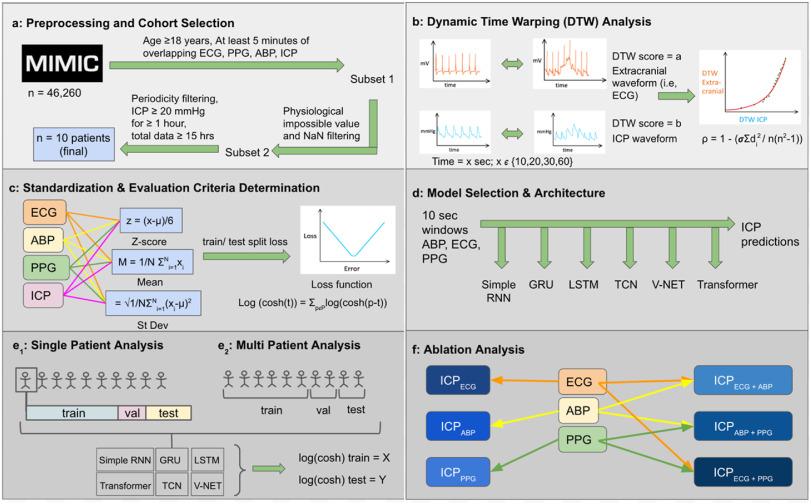A Deep Learning Approach for Generating Intracranial Pressure Waveforms from Extracranial Signals Routinely Measured in the Intensive Care Unit
Nair SS, Guo A, Boen J, Aggarwal A, Chahal O, Tandon A, Patel M, Sankararaman S, Durr NJ, Azad TD, Pirracchio R, Stevens RD
Computers in Biology and Medicine 177 2024 [Journal Link]
Abstract
Intracranial pressure (ICP) is commonly monitored to guide treatment in patients with serious brain disorders such as traumatic brain injury and stroke. Established methods to assess ICP are resource intensive and highly invasive. We hypothesized that ICP waveforms can be computed noninvasively from three extracranial physiological waveforms routinely acquired in the Intensive Care Unit (ICU): arterial blood pressure (ABP), photoplethysmography (PPG), and electrocardiography (ECG). We evaluated over 600 hours of high-frequency (125 Hz) simultaneously acquired ICP, ABP, ECG, and PPG waveform data in 10 patients admitted to the ICU with critical brain disorders. The data were segmented in non-overlapping 10-second windows, and ABP, ECG, and PPG waveforms were used to train deep learning (DL) models to re-create concurrent ICP. The predictive performance of six different DL models was evaluated in single- and multi-patient iterations. The mean average error (MAE) ±SD of the best-performing models was 1.34 ± 0.59 mmHg in the single- patient and 5.10 ± 0.11 mmHg in the multi-patient analysis. Ablation analysis was conducted to compare contributions from single physiologic sources and demonstrated statistically indistinguishable performances across the top DL models for each waveform (MAE±SD 6.33 ± 0.73, 6.65 ± 0.96, and 7.30 ± 1.28 mmHg, respectively, for ECG, PPG, and ABP; p= 0.42). Results support the preliminary feasibility and accuracy of DL-enabled continuous noninvasive ICP waveform computation using extracranial physiological waveforms. With refinement and further validation, this method could represent a safer and more accessible alternative to invasive ICP, enabling assessment and treatment in low-resource settings.
